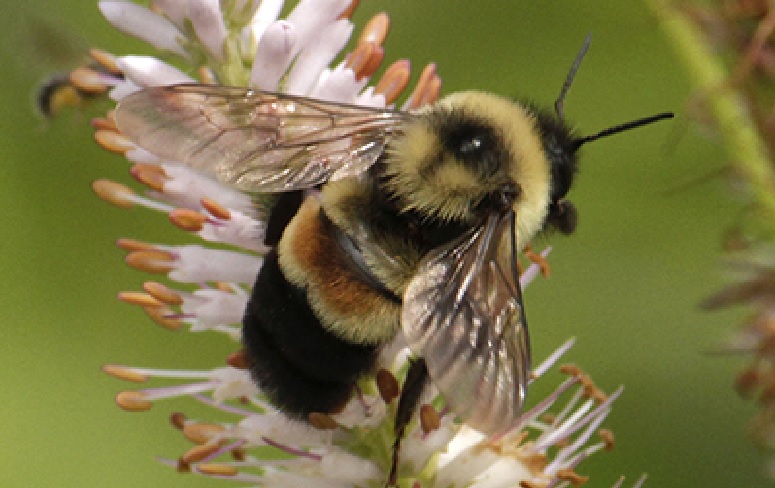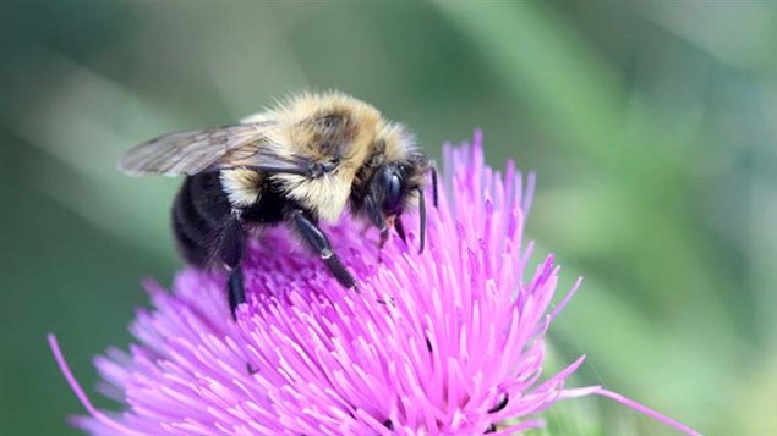While there have been several stories over the years of serious declines in honey bee populations, the state of the many wild bees is almost impossible to gauge but is thought to also be seriously compromised.
Wild bees are critical pollinators of crops, flowers, and other plants.
The general term for one type of wild bee is “bumble bee”, but within that category there are over 40 species in Canada.
The “rusty patch bumble bee” as an example or what may be happening to all wild bees, was once widespread across southern Ontario but it hasn’t been seen since 2009 and hopes are it hasn’t disappeared completely.

The rusty patch bumble bee recognized by the reddish spot on its back, was once common in southern Ontario, now not seen in 10 years. ( of Susan Day; UW-Madison Arboretum)
Another of the big fuzzy bumble bees, American bumble bee, Bombus pensylvanicus, was also regularly seen around southern Ontario.
Now, a new study from York University in Toronto says this species is also facing extinction in its former range in Canada.
The species has dark wings, and yellow stripings on a dark body.
A federal advisory committee lists the bee as being of “special concern” but the new study puts the risk far higher.
Critically endangered
The study findings suggest the Canadian range has declined by 70 per cent, and relative occurrence by 89 per cent, therby earning a rating as “critically endangered”. using the International Union for the Conservation of Nature (IUCN) Red List assessment criteria.
The findings were published in scientific publication, “Journal of Insect Conservation” under the title, Incorporating citizen science, museum specimens, and field work into the assessment of extinction risk of the American Bumble bee (Bombus pensylvanicus De Geer 1773) in Canada ( full access HERE)

Common Eastern Bumble bee. Such wild bees are critical for pollination of crops and all plants. ( S Colla)
York professor Sheila Colla (PhD) is a renowned expert in bees. She speculates that because the species emerges later than others in the summer it has less time to build resources before producing the next generation in the fall, which puts them at a disadvantage.
She also notes a decline in their grassland habitats due to increasing encroachment of agriculture and urbanization.
The species also nests on the ground, not underground and may be more vulnerable to pesticide sprays, trampling, and other hazards She notes some studies have shown the species has higher disease levels possibly from introduced diseases from commercial honey bees.
Colla says the Colla Lab at York University will be continuing research into causes of the declines.
Citizen science-Bumble Bee Watch
Bee experts say citizen science is an important contributor of knowledge because of the difficulty in assessing wild bees. Bumble Bee Watch
is a web-based citizen science program where participants photograph Bumble bees anywhere in North America, upload the photos and relevant site information to a website
Additional information







For reasons beyond our control, and for an undetermined period of time, our comment section is now closed. However, our social networks remain open to your contributions.